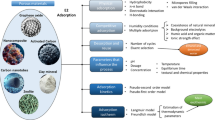Abstract
The pesticides DDT, MXC and γHCH at concentrations between 41 and 200 μM inhibited DNA synthesis (measured by [3H]thymidine incorporation) of cultured bovine oviductal endosalpingeal and uterine cells in the order DDT>MXC>γHCH, in comparison to nonexposed controls. Sensitivity to the toxicants was greater in uterine epithelial and stromal cells than in uterine smooth muscle or oviductal endosalpingeal cells. Besides the inhibitory effect, there was a stimulatory effect on DNA synthesis in epithelial cells in the range of 28 nM to 2.8 μM DDT and in stromal cells at 2.8 and 28 nM for MXC. An explanation for this reaction could be that both toxicants have an estrogen-like effect. In the present study, it is shown that the o,p’ isomer of DDT can bind to the cytoplasmatic estrogen receptor and DDT or MXC were able to inhibit the binding of radiolabelled estradiol to the uterine endometrial explants in bovine, whereas γHCH did not change the binding. These findings represent an estrogenic effect of DDT and MXC in two complete in vitro systems.
Similar content being viewed by others
Author information
Authors and Affiliations
Additional information
Received: 10 October 1995/Accepted: 19 December 1995
Rights and permissions
About this article
Cite this article
Tiemann, U., Schneider, F. & Tuchscherer, A. Effects of organochlorine pesticides on DNA synthesis of cultured oviductal and uterine cells and on estrogen receptor of uterine tissue from heifers. Arch Toxicol 70, 490–496 (1996). https://doi.org/10.1007/s002040050303
Issue Date:
DOI: https://doi.org/10.1007/s002040050303




